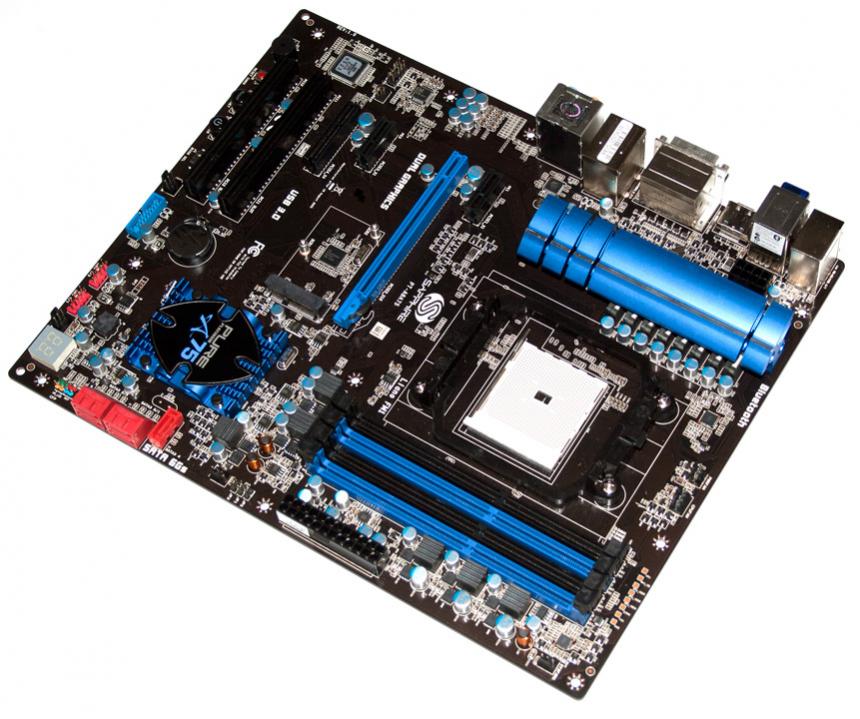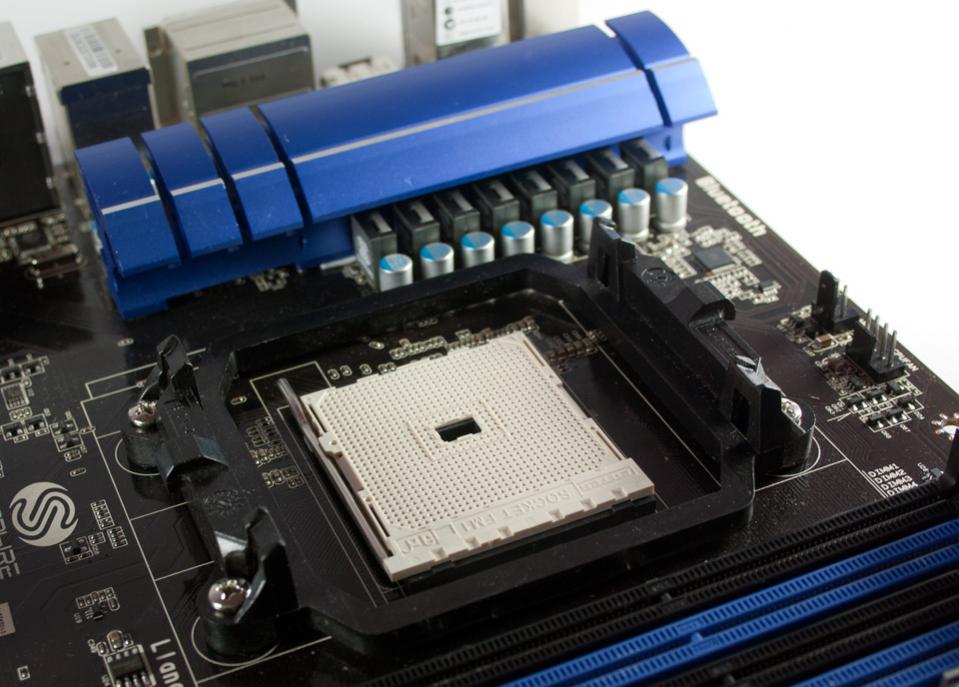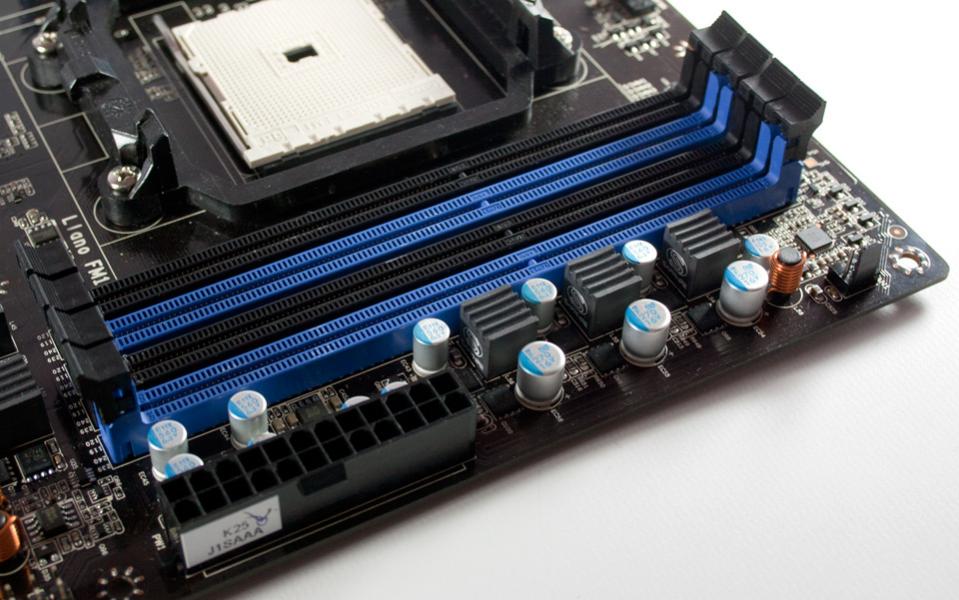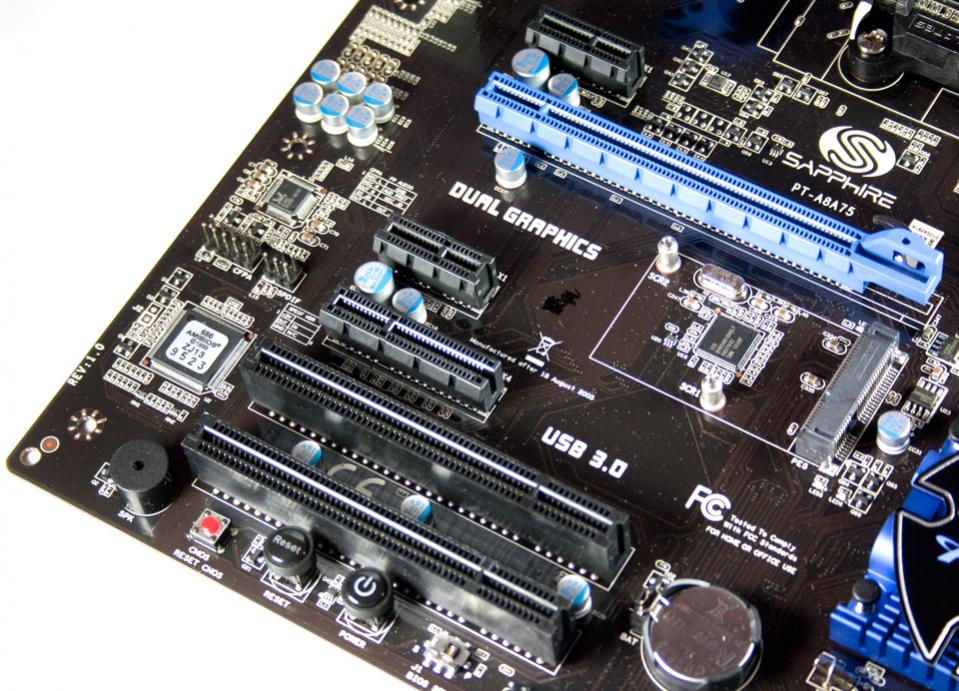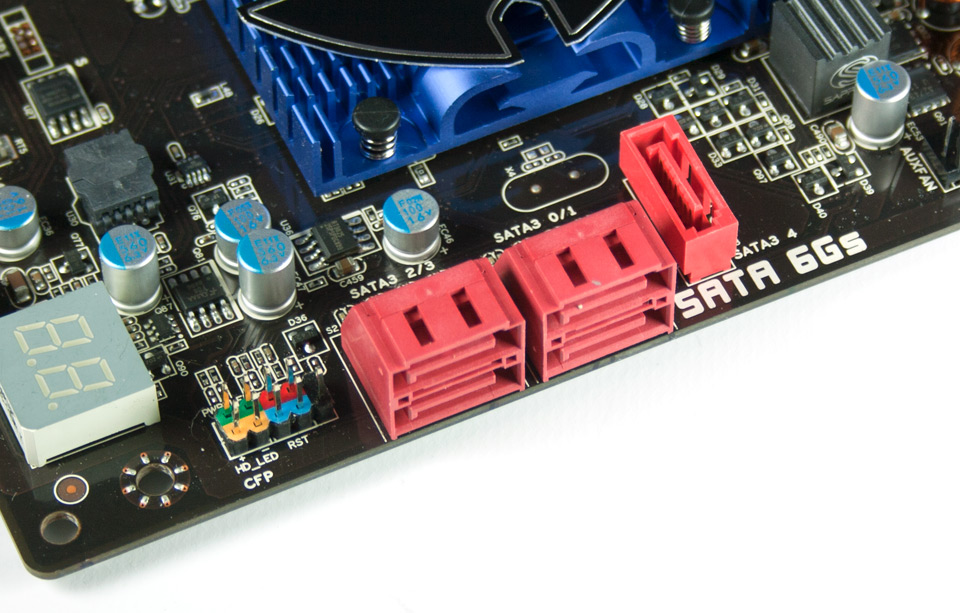Sapphire Pure Platinum A75 Motherboard Review
Andy Ruffell / 13 years ago
A Closer LookThe A75 Pure Platinum board from Sapphire is undoubtedly the sexiest FM1 board we’ve looked at with its sleek blue and black styling and plenty of room around the major components for the best airflow. By using the blue and black colour scheme it gives the board an extreme overclocked feel to it and at least seems to us, that this board really means business.
The A75 board revolves around FM1 which is the latest socket release from AMD and is a lot different in terms of looks to the AM3+ socket. On other boards we’ve seen a cut-down retention bracket for fixing your cooler on to, but Sapphire have stuck with the original design, yet space is still freely available around the socket. Cooling wise, we have a single passive heatsink featuring the blue colour scheme to match the rest of the board.
FM1 still supports dual channel memory and therefore we find four DDR3 memory slots sporting blue and black colours. Support includes memory speeds of up to 1866MHz and with the latest BIOS, memory compatibility is at an all time high.
The expansion slot area is quite refreshing with a variety of different ports that are spaced out quite nicely. From the top we see a PCI-Express x1 slot, PCI-Express x16 slot, another PCI-Express x1 slot, PCI-Express x4 and two legacy PCI slots. It’s a real nice thing to see the x4 slot on this board as a lot of board manufacturers seem to have dismissed it from their products.
Also, below the PCI-Express x16 slot we find a Mini PCI-Express slot for users with TV Tuner cards or wanting to add Wi-Fi capability to their system. This is a fantastic idea in our opinion as the Mini PCI-E slot doesn’t take up any additional room or lead to any obstruction of other components.
On the edge of the board are five SATA ports supporting SATA III functionality giving the user the best performance in terms of storage. Just next to the SATA ports is the A75 branded heatsink, debug LED and a few front panel connectors.
Speaking of front panel connectors, an embedded speaker is included on the board, clear CMOS, reset and power buttons and a little switch for choosing between the two BIOS editions that this board includes. Also included are USB connectors including USB 3.0, debug LED display and the usual front panel led and button headers.
On the back of the board, we see the vast connections that this board incorporates including a PS2 mouse/keyboard combo port and two USB 2.0 ports as well as a Bluetooth dongle adapter, another two USB 2.0 ports and eSATA. The display connectors on this board give us a DisplayPort, HDMI and DVI-D port. Just to the right of the display outputs we find a Gigabit LAN port, two USB 3.0 ports and audio input/output ports.
